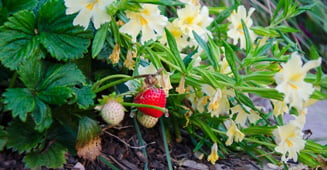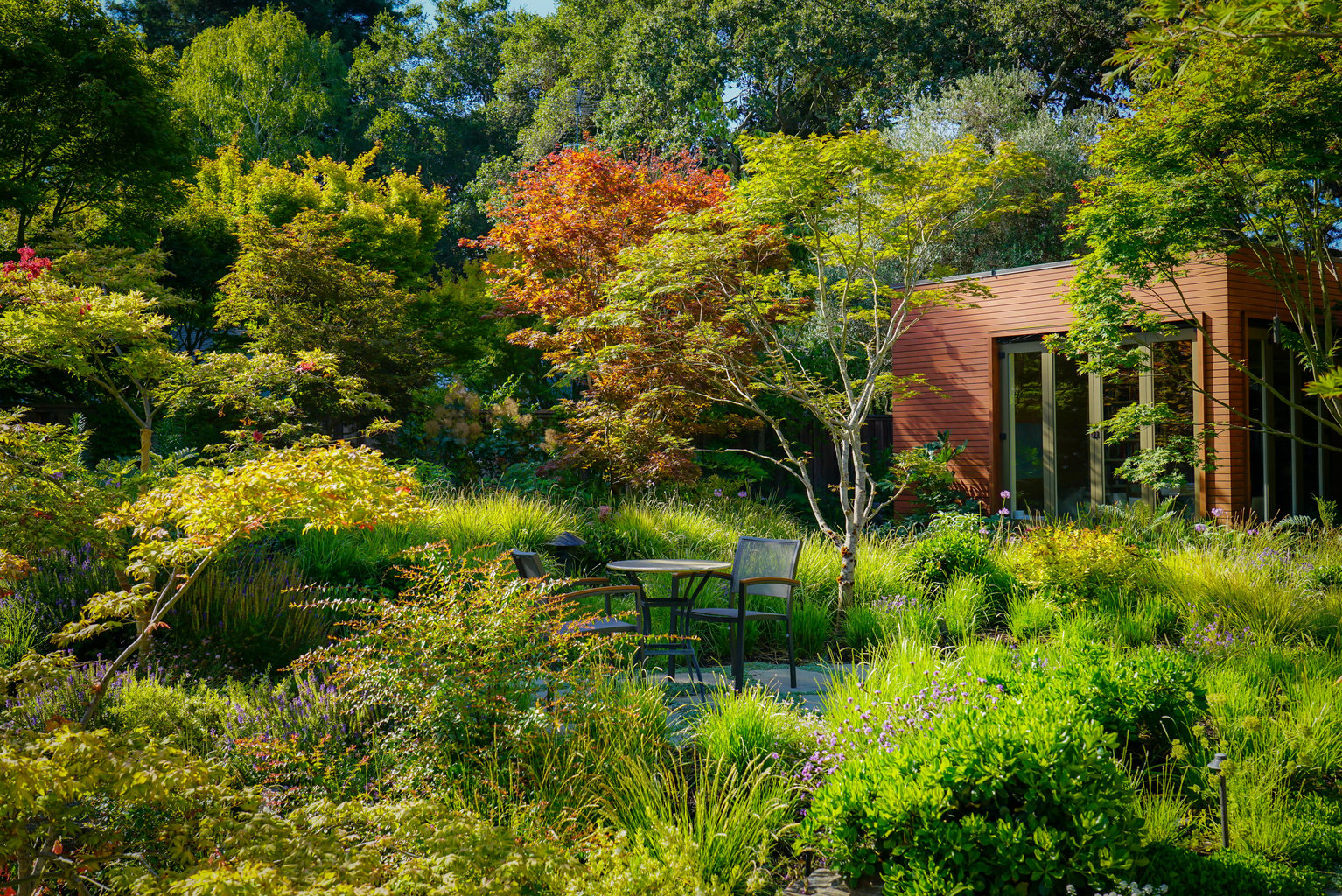

Contributor
- Topics: Archive
Yarrow (Achillea millefolium) and native strawberries (Fragaria vesca ssp. californica) create a dynamic and delicious groundcover. Photo: Teresa Renee Norris
Put your hands in the soil and feel the dark, moist, gritty earth; smell the aroma of soil and plants and wake up to your surroundings. Sweat a little and enjoy the beautiful, tasty fruits of your labor.
Gardening connects us to nature. It also invites us to think like scientists. The garden is our laboratory where experimentation, observation, and evaluation are a part of the process.
Conventional gardening advice teaches us to compartmentalize and evaluate the garden through the lens of each particular problem. Once the pest or disease has been isolated and identified a targeted treatment is applied. What can we buy to make the powdery mildew go away or combat pesky white flies? Yet isolating a disease or a pest problem and treating it with a product often means harming other living organisms, bacteria, and beneficial forms of life that support the health of the garden and its plants.
[caption id="attachment_16073" align="alignnone" width="5...
READ THE WHOLE STORY
Join now to access new headline articles, archives back to 1977, and so much more.
Enjoy this article for FREE:
Articles: Calochortophilia: A Californian’s Love Affair with a Genus by Katherine Renz
If you are already a member, please log in using the form below.
Share:
Social Media
Garden Futurist Podcast
Most Popular
Videos
Topics
Related Posts

Low Maintenance Gardens – Better for Pollinators and People
Autumn 2022 “I come out every day. It’s therapy, my meditation.” Janet’s young garden transformed from overgrown, invasive plants to mostly natives. The dailiness of

Invasive Plants Are Still Being Sold: Preventing Noxious Weeds in Your Landscape
Autumn 2022 With so many beautiful ornamental plant species and cultivars throughout California and the Pacific Northwest, how do you decide which ones to include

Garden Design in Steppe with Transforming Landscapes with Garden Futurist Emmanuel Didier
Summer 2022 Listen to full Garden Futurist: Episode XVII podcast here. Emmanuel Didier, Principal and Creative Director at Didier Design Studio is a leading figure

Seslerias: Versatile Groundcover Meadow Grasses
Summer 2022 Without question, the most beautiful and versatile of all the groundcover meadow grasses are the moor grasses (Sesleria). Moor grasses tick off all











